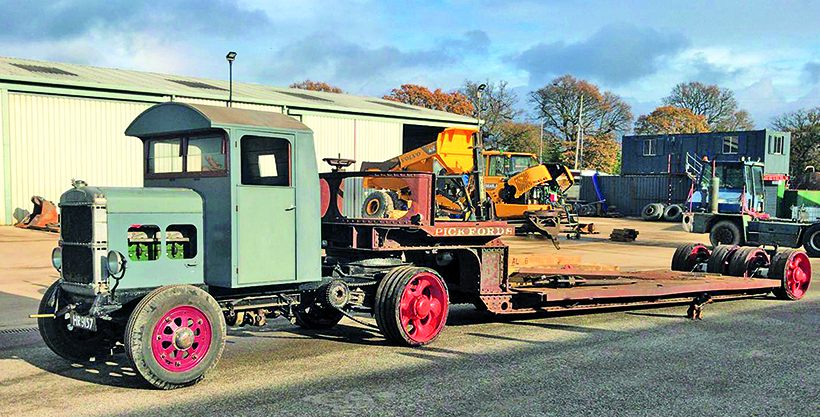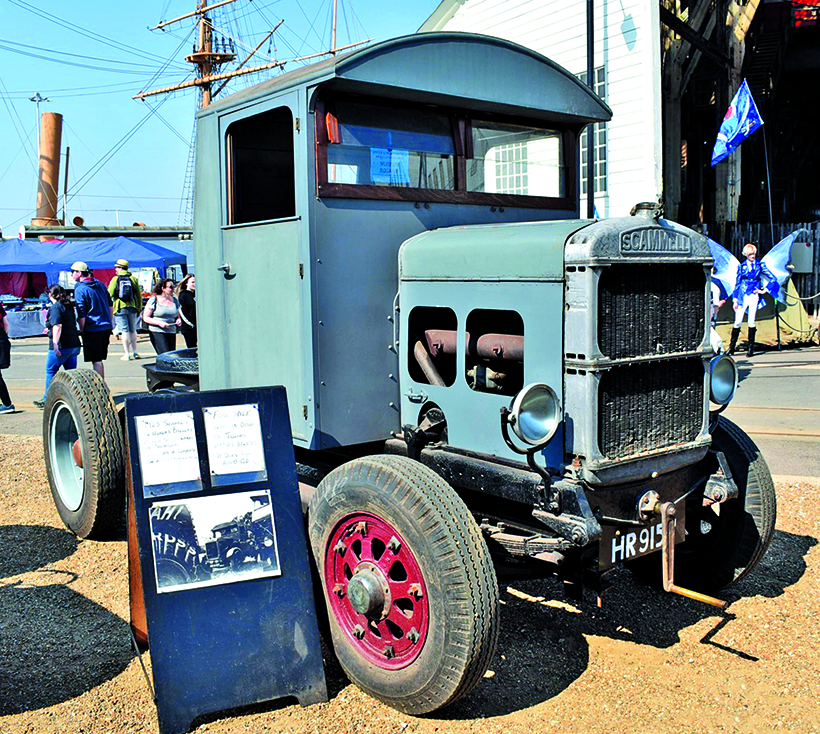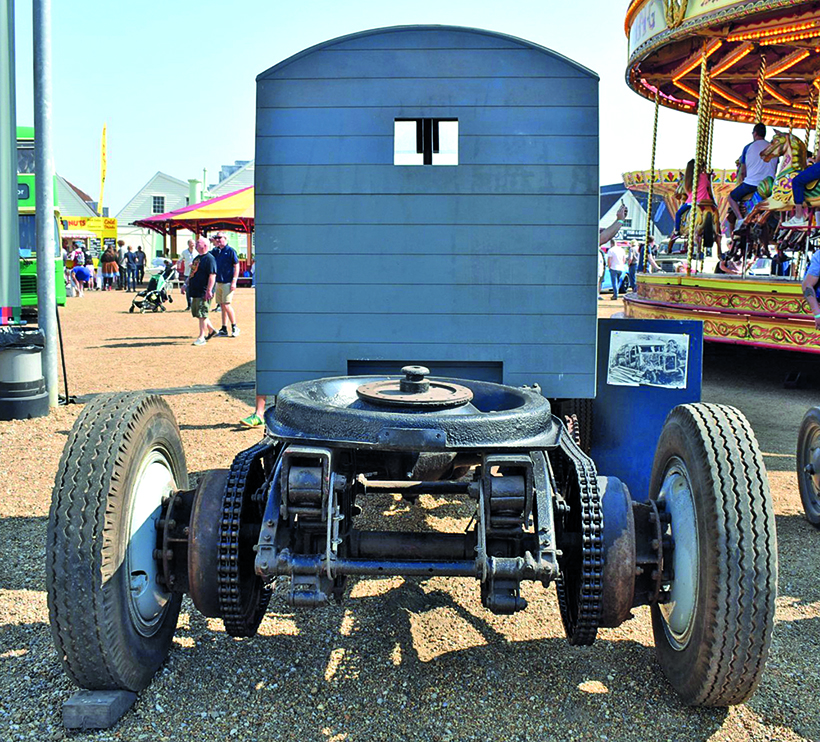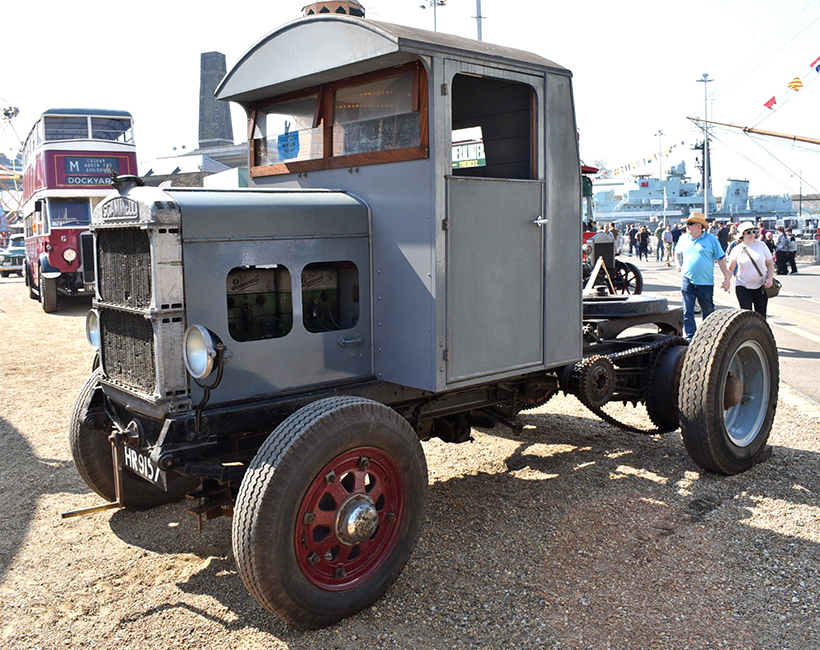We report on the life and times of an historic 1923 Scammell S12, and its recent, shake-down tests following a solid-tyre wheel conversion.

This historic 1923 Scammell S12 chain-drive artic was new to Ushers Brewery, of Trowbridge, Wiltshire, and used for carrying beer, hops, malt and pieces of brewing equipment in the south-west. The venerable lorry carries the Scammell 5.25-litre, ohv petrol engine (with splash-feed lubrication) that pushes its power through a four-speed transmission.
During the mid-1930s, the lorry was sold to Edwards of Swindon and, while with that company, a chain-driven dynamo was mounted where the Scammell fifth wheel coupling plate would have been placed. So equipped, it was then used to tow and drive the Edwards’ dodgem cars. It was given a very fine body to go with the conversion and then, during the 1940s, it was converted to Gardner diesel power.
It’s been suggested that the lorry was last used by Edwards in the early 1960s, but readers might know different. It was saved from scrap in the 1980s, when a new owner stripped off the rotten bodywork. Then, at a sale on May 15th, 1993, it was purchased by clever vehicle restorer and steam waggon owner, Julian Hopper, from Kent.

At that stage, Julian knew nothing of the vehicle’s history but then, as the restoration was nearing completion, a friend sent Julian a YouTube link which showed three very interesting photographs of HE 9157. The first was taken during the Scammell’s early days with Edwards, and showed the original-style cab and the open dynamo on the back.
The second image showed the vehicle with its chariot bodywork and restyled cab, while the third depicted it in a derelict state and lacking its Gardner engine. There was no engine when Julian purchased the Scammell but, luckily, his long-standing friend, John C Butler, knew of three, original-style Scammell petrol engines that had been languishing in a Norfolk scrapyard.
The engines had been lying on the ground for decades – possibly even since the 1930s – had started to sink into the ground and were covered by all sorts, including kitchen sinks and 1960s Ford Cortinas. But, with the help of a Hiab, the obstructions were carefully cleared so that the engines could be extracted and then transported to Kent.

Thanks to Julian’s engineering skill and experience, he was able to create one complete engine out of the three, and this is what’s powering the S12 today. Luckily all three engines were in relatively good condition considering they’d been standing outside for over 60 years! Incidentally, the bits left over are now providing parts for the Knox gun tractor that Julian’s also working on – this was what the Scammell artic vehicle was essentially inspired by.
It’s important to remember that it’s 100 years ago this year that Scammell built its factory at Watford, to make its famous line of commercial vehicles, after it had been experimenting since 1919 with a heavy four-wheeler. Of course, the company was the first in the UK to make such vehicles in decent numbers and, as already mentioned, its inspiration was the American Knox made in Springfield (later in Chicopee Falls and then, finally, in Longmeadow, Massachusetts).
Nevertheless, Scammell & Nephew Ltd was Foden, Mann and Sentinel dealers, and also serviced such vehicles at its Spitalfields premises, and was also a well-known coach body builder. Making its own lorries was a new departure, but one that fitted well into the overall scheme of things.

It was in 2019 that HR 9157 was offered for sale, and seen in the Scammell Register marquee at the 2019 Great Dorset Steam Fair, as part of the 100 years of Scammell Lorries Ltd celebration. Eventually, a deal was done and Les and Dee Searle purchased the vehicle from Julian, having already acquired two, solid-tyred Scammell period low-loader trailers that it’s thought had worked for Pickfords at one time. The solid wheels now on the rear of the S12 came from one of the trailers and, after various other work had been done, the whole outfit came together a few months ago, with the trailer.
It’s been successfully tested around the famous premises at Horsham and, now, this 98-year-old heavy-haulage pioneer has been given the green light for the future. We all look forward to seeing this vehicle out and about and, hopefully, on a future HCVS London-Brighton Run.
For a money-saving subscription to Old Glory magazine, simply click here

